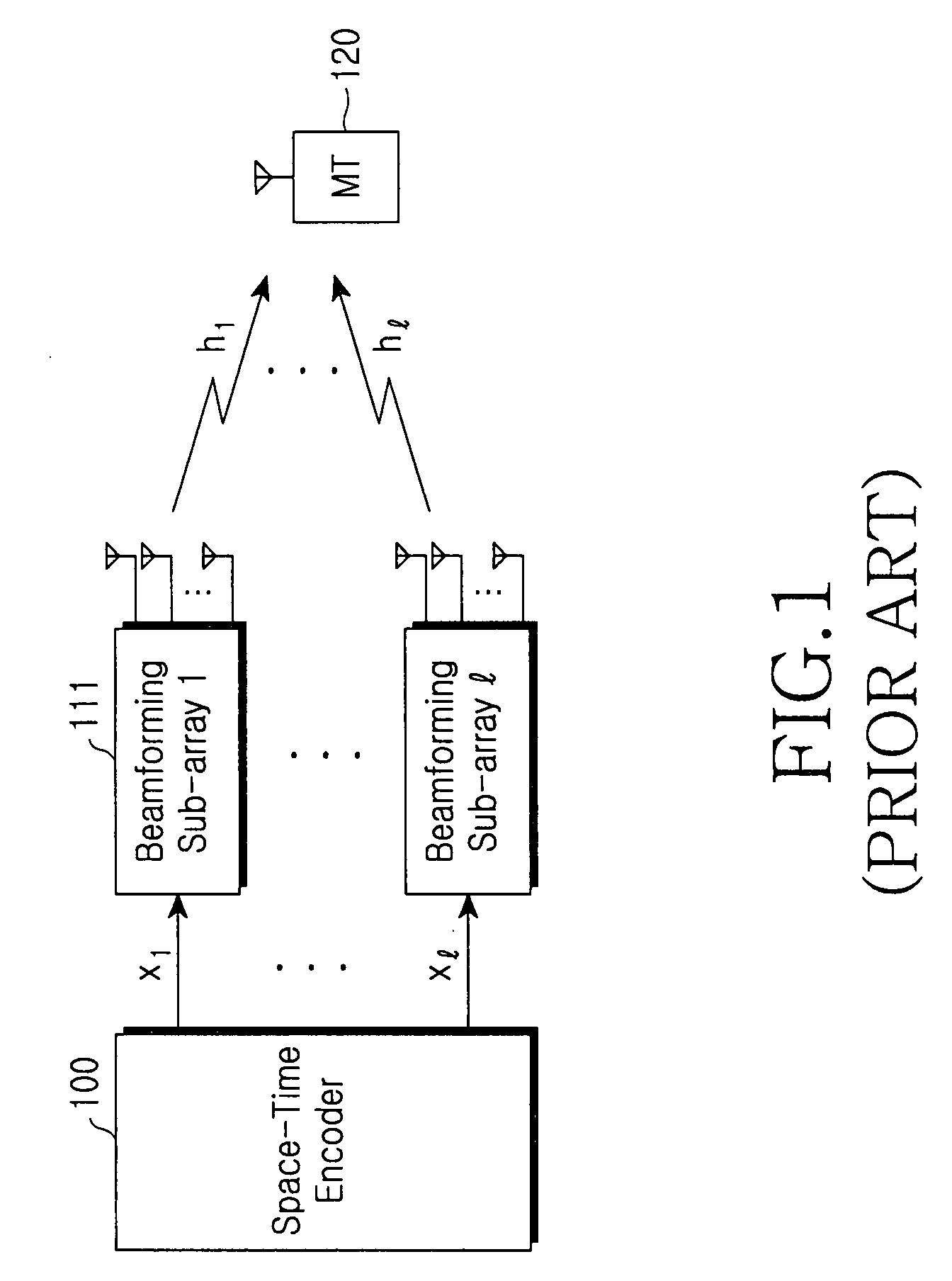Method and apparatus for adaptively allocating transmission power for beam-forming combined with OSTBCs in a distributed wireless communication system
a distributed wireless communication system and transmission power technology, applied in the direction of pulse manipulation, pulse monitoring, pulse technique, etc., can solve the problems of uneconomical equal allocation of transmission power, mobile terminals are susceptible to momentary signal loss, and inability to conduct more thorough research
- Summary
- Abstract
- Description
- Claims
- Application Information
AI Technical Summary
Benefits of technology
Problems solved by technology
Method used
Image
Examples
Embodiment Construction
[0037]Hereinafter, an exemplary embodiment according to the present invention will be described with reference to the accompanying drawings. In the description herein below, many particular items are shown such as detailed components of an apparatus. However, a person of ordinary skill in the art appreciates that the detailed components are provided only to enhance the general understanding of the present invention, and not for purposes of limiting the invention. A person of ordinary skill in the art also understands that the present invention can be embodied without including such detailed components, and the invention may have many variations that are within the spirit of the invention and the scope of the appended claims.
[0038]Hereinafter, the features of the present invention will be described in more detail with reference to the accompanying drawings.
[0039][System Model]
[0040]FIG. 2 is a block diagram illustrating the configuration of a transmission apparatus according to an ex...
PUM
 Login to View More
Login to View More Abstract
Description
Claims
Application Information
 Login to View More
Login to View More - R&D
- Intellectual Property
- Life Sciences
- Materials
- Tech Scout
- Unparalleled Data Quality
- Higher Quality Content
- 60% Fewer Hallucinations
Browse by: Latest US Patents, China's latest patents, Technical Efficacy Thesaurus, Application Domain, Technology Topic, Popular Technical Reports.
© 2025 PatSnap. All rights reserved.Legal|Privacy policy|Modern Slavery Act Transparency Statement|Sitemap|About US| Contact US: help@patsnap.com



